Dahai Yu
GeoGen: A Two-stage Coarse-to-Fine Framework for Fine-grained Synthetic Location-based Social Network Trajectory Generation
Oct 09, 2025



Abstract:Location-Based Social Network (LBSN) check-in trajectory data are important for many practical applications, like POI recommendation, advertising, and pandemic intervention. However, the high collection costs and ever-increasing privacy concerns prevent us from accessing large-scale LBSN trajectory data. The recent advances in synthetic data generation provide us with a new opportunity to achieve this, which utilizes generative AI to generate synthetic data that preserves the characteristics of real data while ensuring privacy protection. However, generating synthetic LBSN check-in trajectories remains challenging due to their spatially discrete, temporally irregular nature and the complex spatio-temporal patterns caused by sparse activities and uncertain human mobility. To address this challenge, we propose GeoGen, a two-stage coarse-to-fine framework for large-scale LBSN check-in trajectory generation. In the first stage, we reconstruct spatially continuous, temporally regular latent movement sequences from the original LBSN check-in trajectories and then design a Sparsity-aware Spatio-temporal Diffusion model (S$^2$TDiff) with an efficient denosing network to learn their underlying behavioral patterns. In the second stage, we design Coarse2FineNet, a Transformer-based Seq2Seq architecture equipped with a dynamic context fusion mechanism in the encoder and a multi-task hybrid-head decoder, which generates fine-grained LBSN trajectories based on coarse-grained latent movement sequences by modeling semantic relevance and behavioral uncertainty. Extensive experiments on four real-world datasets show that GeoGen excels state-of-the-art models for both fidelity and utility evaluation, e.g., it increases over 69% and 55% in distance and radius metrics on the FS-TKY dataset.
SWIRL: A Staged Workflow for Interleaved Reinforcement Learning in Mobile GUI Control
Aug 27, 2025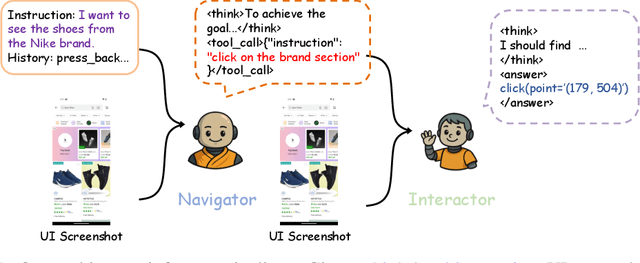
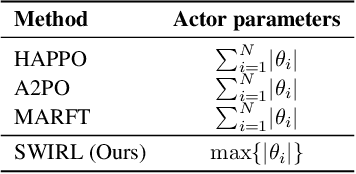
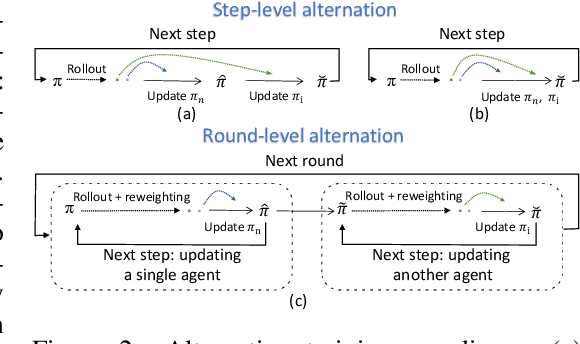

Abstract:The rapid advancement of large vision language models (LVLMs) and agent systems has heightened interest in mobile GUI agents that can reliably translate natural language into interface operations. Existing single-agent approaches, however, remain limited by structural constraints. Although multi-agent systems naturally decouple different competencies, recent progress in multi-agent reinforcement learning (MARL) has often been hindered by inefficiency and remains incompatible with current LVLM architectures. To address these challenges, we introduce SWIRL, a staged workflow for interleaved reinforcement learning designed for multi-agent systems. SWIRL reformulates MARL into a sequence of single-agent reinforcement learning tasks, updating one agent at a time while keeping the others fixed. This formulation enables stable training and promotes efficient coordination across agents. Theoretically, we provide a stepwise safety bound, a cross-round monotonic improvement theorem, and convergence guarantees on return, ensuring robust and principled optimization. In application to mobile GUI control, SWIRL instantiates a Navigator that converts language and screen context into structured plans, and an Interactor that grounds these plans into executable atomic actions. Extensive experiments demonstrate superior performance on both high-level and low-level GUI benchmarks. Beyond GUI tasks, SWIRL also demonstrates strong capability in multi-agent mathematical reasoning, underscoring its potential as a general framework for developing efficient and robust multi-agent systems.
UQGNN: Uncertainty Quantification of Graph Neural Networks for Multivariate Spatiotemporal Prediction
Aug 12, 2025



Abstract:Spatiotemporal prediction plays a critical role in numerous real-world applications such as urban planning, transportation optimization, disaster response, and pandemic control. In recent years, researchers have made significant progress by developing advanced deep learning models for spatiotemporal prediction. However, most existing models are deterministic, i.e., predicting only the expected mean values without quantifying uncertainty, leading to potentially unreliable and inaccurate outcomes. While recent studies have introduced probabilistic models to quantify uncertainty, they typically focus on a single phenomenon (e.g., taxi, bike, crime, or traffic crashes), thereby neglecting the inherent correlations among heterogeneous urban phenomena. To address the research gap, we propose a novel Graph Neural Network with Uncertainty Quantification, termed UQGNN for multivariate spatiotemporal prediction. UQGNN introduces two key innovations: (i) an Interaction-aware Spatiotemporal Embedding Module that integrates a multivariate diffusion graph convolutional network and an interaction-aware temporal convolutional network to effectively capture complex spatial and temporal interaction patterns, and (ii) a multivariate probabilistic prediction module designed to estimate both expected mean values and associated uncertainties. Extensive experiments on four real-world multivariate spatiotemporal datasets from Shenzhen, New York City, and Chicago demonstrate that UQGNN consistently outperforms state-of-the-art baselines in both prediction accuracy and uncertainty quantification. For example, on the Shenzhen dataset, UQGNN achieves a 5% improvement in both prediction accuracy and uncertainty quantification.
Uncertainty-aware Predict-Then-Optimize Framework for Equitable Post-Disaster Power Restoration
Aug 06, 2025Abstract:The increasing frequency of extreme weather events, such as hurricanes, highlights the urgent need for efficient and equitable power system restoration. Many electricity providers make restoration decisions primarily based on the volume of power restoration requests from each region. However, our data-driven analysis reveals significant disparities in request submission volume, as disadvantaged communities tend to submit fewer restoration requests. This disparity makes the current restoration solution inequitable, leaving these communities vulnerable to extended power outages. To address this, we aim to propose an equity-aware power restoration strategy that balances both restoration efficiency and equity across communities. However, achieving this goal is challenging for two reasons: the difficulty of predicting repair durations under dataset heteroscedasticity, and the tendency of reinforcement learning agents to favor low-uncertainty actions, which potentially undermine equity. To overcome these challenges, we design a predict-then-optimize framework called EPOPR with two key components: (1) Equity-Conformalized Quantile Regression for uncertainty-aware repair duration prediction, and (2) Spatial-Temporal Attentional RL that adapts to varying uncertainty levels across regions for equitable decision-making. Experimental results show that our EPOPR effectively reduces the average power outage duration by 3.60% and decreases inequity between different communities by 14.19% compared to state-of-the-art baselines.
Using In-Context Learning for Automatic Defect Labelling of Display Manufacturing Data
Jun 05, 2025Abstract:This paper presents an AI-assisted auto-labeling system for display panel defect detection that leverages in-context learning capabilities. We adopt and enhance the SegGPT architecture with several domain-specific training techniques and introduce a scribble-based annotation mechanism to streamline the labeling process. Our two-stage training approach, validated on industrial display panel datasets, demonstrates significant improvements over the baseline model, achieving an average IoU increase of 0.22 and a 14% improvement in recall across multiple product types, while maintaining approximately 60% auto-labeling coverage. Experimental results show that models trained on our auto-labeled data match the performance of those trained on human-labeled data, offering a practical solution for reducing manual annotation efforts in industrial inspection systems.
DnLUT: Ultra-Efficient Color Image Denoising via Channel-Aware Lookup Tables
Mar 20, 2025Abstract:While deep neural networks have revolutionized image denoising capabilities, their deployment on edge devices remains challenging due to substantial computational and memory requirements. To this end, we present DnLUT, an ultra-efficient lookup table-based framework that achieves high-quality color image denoising with minimal resource consumption. Our key innovation lies in two complementary components: a Pairwise Channel Mixer (PCM) that effectively captures inter-channel correlations and spatial dependencies in parallel, and a novel L-shaped convolution design that maximizes receptive field coverage while minimizing storage overhead. By converting these components into optimized lookup tables post-training, DnLUT achieves remarkable efficiency - requiring only 500KB storage and 0.1% energy consumption compared to its CNN contestant DnCNN, while delivering 20X faster inference. Extensive experiments demonstrate that DnLUT outperforms all existing LUT-based methods by over 1dB in PSNR, establishing a new state-of-the-art in resource-efficient color image denoising. The project is available at https://github.com/Stephen0808/DnLUT.
Hundred-Kilobyte Lookup Tables for Efficient Single-Image Super-Resolution
Dec 11, 2023Abstract:Conventional super-resolution (SR) schemes make heavy use of convolutional neural networks (CNNs), which involve intensive multiply-accumulate (MAC) operations, and require specialized hardware such as graphics processing units. This contradicts the regime of edge AI that often runs on devices strained by power, computing, and storage resources. Such a challenge has motivated a series of lookup table (LUT)-based SR schemes that employ simple LUT readout and largely elude CNN computation. Nonetheless, the multi-megabyte LUTs in existing methods still prohibit on-chip storage and necessitate off-chip memory transport. This work tackles this storage hurdle and innovates hundred-kilobyte LUT (HKLUT) models amenable to on-chip cache. Utilizing an asymmetric two-branch multistage network coupled with a suite of specialized kernel patterns, HKLUT demonstrates an uncompromising performance and superior hardware efficiency over existing LUT schemes.
Efficient and Accurate Quantized Image Super-Resolution on Mobile NPUs, Mobile AI & AIM 2022 challenge: Report
Nov 07, 2022
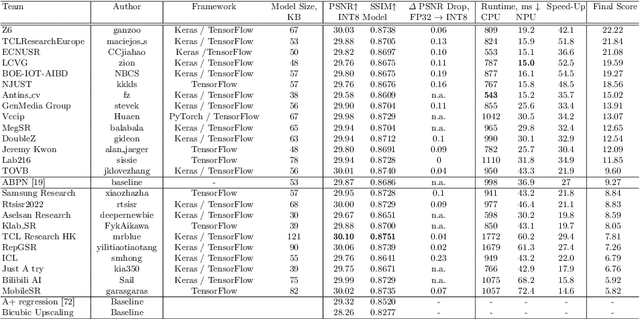
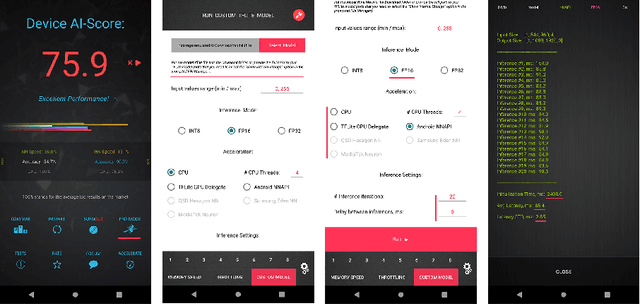
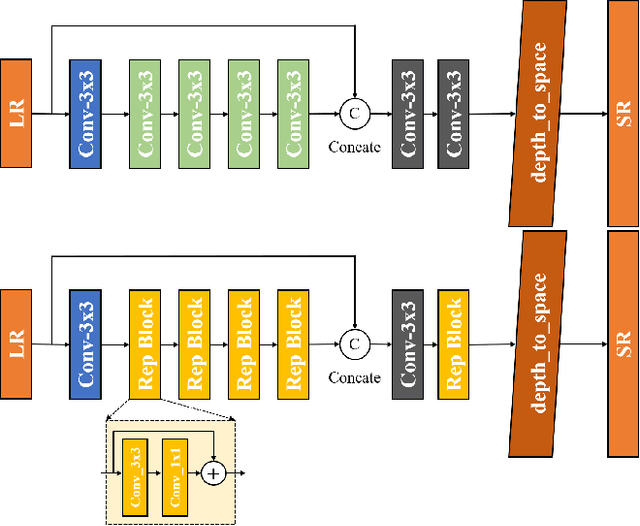
Abstract:Image super-resolution is a common task on mobile and IoT devices, where one often needs to upscale and enhance low-resolution images and video frames. While numerous solutions have been proposed for this problem in the past, they are usually not compatible with low-power mobile NPUs having many computational and memory constraints. In this Mobile AI challenge, we address this problem and propose the participants to design an efficient quantized image super-resolution solution that can demonstrate a real-time performance on mobile NPUs. The participants were provided with the DIV2K dataset and trained INT8 models to do a high-quality 3X image upscaling. The runtime of all models was evaluated on the Synaptics VS680 Smart Home board with a dedicated edge NPU capable of accelerating quantized neural networks. All proposed solutions are fully compatible with the above NPU, demonstrating an up to 60 FPS rate when reconstructing Full HD resolution images. A detailed description of all models developed in the challenge is provided in this paper.
UDC 2020 Challenge on Image Restoration of Under-Display Camera: Methods and Results
Aug 18, 2020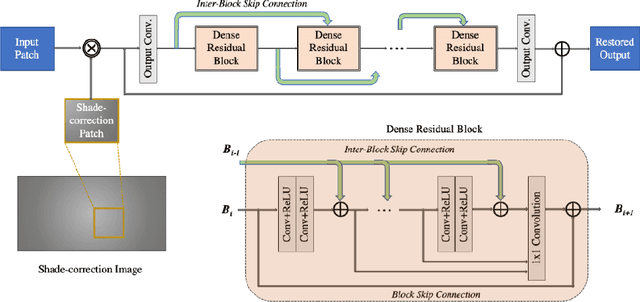

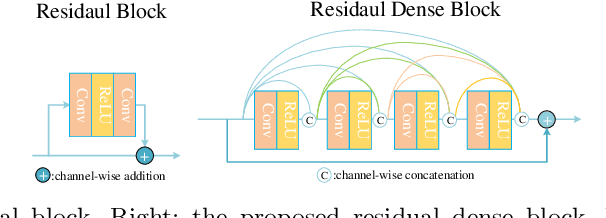

Abstract:This paper is the report of the first Under-Display Camera (UDC) image restoration challenge in conjunction with the RLQ workshop at ECCV 2020. The challenge is based on a newly-collected database of Under-Display Camera. The challenge tracks correspond to two types of display: a 4k Transparent OLED (T-OLED) and a phone Pentile OLED (P-OLED). Along with about 150 teams registered the challenge, eight and nine teams submitted the results during the testing phase for each track. The results in the paper are state-of-the-art restoration performance of Under-Display Camera Restoration. Datasets and paper are available at https://yzhouas.github.io/projects/UDC/udc.html.
End-to-End Denoising of Dark Burst Images Using Recurrent Fully Convolutional Networks
Apr 16, 2019
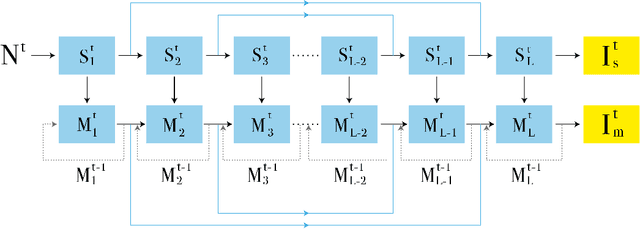
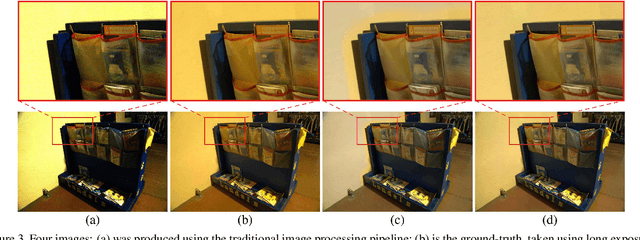
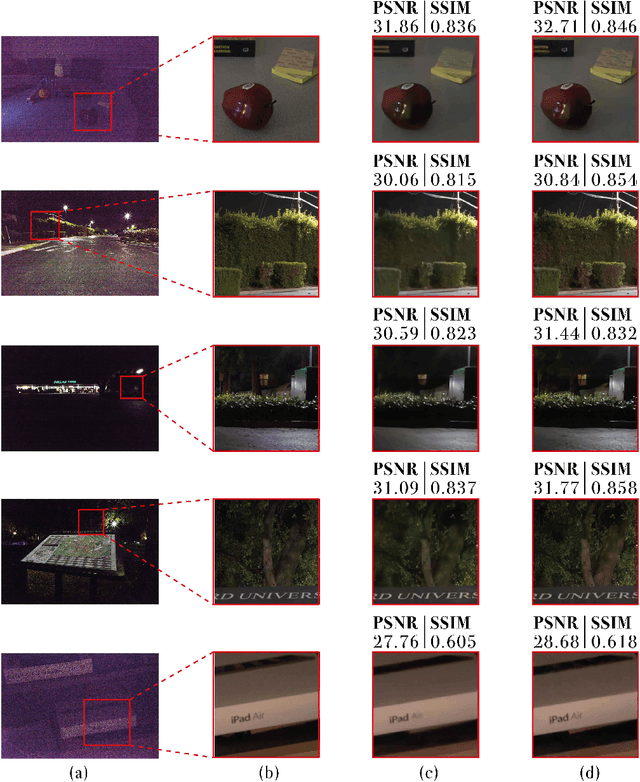
Abstract:When taking photos in dim-light environments, due to the small amount of light entering, the shot images are usually extremely dark, with a great deal of noise, and the color cannot reflect real-world color. Under this condition, the traditional methods used for single image denoising have always failed to be effective. One common idea is to take multiple frames of the same scene to enhance the signal-to-noise ratio. This paper proposes a recurrent fully convolutional network (RFCN) to process burst photos taken under extremely low-light conditions, and to obtain denoised images with improved brightness. Our model maps raw burst images directly to sRGB outputs, either to produce a best image or to generate a multi-frame denoised image sequence. This process has proven to be capable of accomplishing the low-level task of denoising, as well as the high-level task of color correction and enhancement, all of which is end-to-end processing through our network. Our method has achieved better results than state-of-the-art methods. In addition, we have applied the model trained by one type of camera without fine-tuning on photos captured by different cameras and have obtained similar end-to-end enhancements.
 Add to Chrome
Add to Chrome Add to Firefox
Add to Firefox Add to Edge
Add to Edge